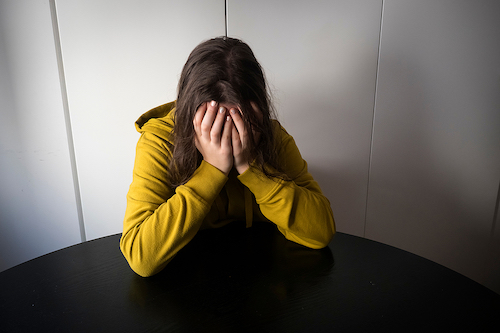 The large majority of young people who experience suicidal thoughts or self-harm experience only mild or moderate mental distress.
The large majority of young people who experience suicidal thoughts or self-harm experience only mild or moderate mental distress.
Researchers from Cambridge University found that young people who thought about suicide or engaged in self harm were at medium risk for mental distress, rather than having obvious symptoms from a diagnosable disorder.
“In two large and representative samples of young people, one replicating the other, we found that the majority of those who had suicidal thoughts or so called non-suicidal self-injury (NSSI) were at medium risk in terms of mental distress. The minority of subjects with very high distress were at greatest risk, but there aren't very many of such people, so they generate few of the total individuals with suicidal thoughts or NSSI,” Professor Peter Jones, senior author of the study and a professor at Cambridge's Department of Psychiatry told Theravive.
Together with colleagues from University College London, the researchers analysed the levels of common mental distress (CMD) in two large groups of young people. Mental health problems like depressions, impulsive behaviour, low self-esteem and anxiety can as a whole be used to measure levels of common mental distress.
They collected self-reported data about suicidal thinking and non-suicidal self-injury, both of which are predicters of increased risk for suicide.
The young people studied were aged between 14 and 24 and lived in London and Cambridgeshire. The first group studied contained 2403 participants and the second group had 1074 participants.
The researchers found that the majority of the young people who had experienced suicidal thoughts (78 per cent in the first group and 66 per cent in the second) or self-harm ( 76 per cent in the first group and 71 per cent in the second) had either mild or moderate levels of mental distress.
The findings highlight a contradictory situation in which those most likely to end their life through suicide may actually be from a large group who were thought to be low risk.
This is well known in a number of physical conditions like diabetes and heart disease and is referred to as the prevention paradox. This is a term used to describe an instance when the majority of cases come from a low or moderate risk population and only a minority of cases come from a high-risk group.
“I'm familiar with the concept in other health areas such as, for instance, blood pressure and heart disease. Most heart attacks or strokes happen to people with only mildly or moderately raised blood pressure. The relative risk is highest in those with super-high blood pressure but there are very few such people,” Jones said.
He says the Cambridge study is the first indication that mental health could be viewed through the lens of the prevention paradox.
The researchers argue that given the results of their study, initiatives to reduce suicide risk among young people shouldn’t only focus on those who experience the greatest levels of distress, depression or anxiety, but rather focus on the whole population.
“We should take into account the facts, and focus on the whole population as well as providing services for those severely affected by distress. We need to shift the mean level or distress to the left (less severe end). Simple as that. I find it a very positive message - we now have a theoretical basis for doing new things that may have high impact,” Jones told Theravive.
“If we made the whole population a little less stressed, we'd do as much if not more good than focusing only on those with the highest distress. It's a balance, but at the moment we don't really have effective population interventions and there's not much science there. These findings provide a basis for a new public mental health,” he said.
He says that due to the COVID pandemic, even a small increase in stress levels across the population could result in more young people being at risk of suicide than would otherwise be detected through symptoms of psychiatric disorders.
“At the moment during the Covid-19 pandemic… certainly many young people are a little more distressed than they would be - that indicates that there may be a large, detrimental effect in the population as a whole, not generated only by people who become clinically unwell,” he said.
Elizabeth Pratt is a medical journalist and producer. Her work has appeared on Healthline, The Huffington Post, Fox News, The Australian Broadcasting Corporation, The Sydney Morning Herald, News.com.au, Escape, The Cusp and Skyscanner. You can read more of her articles here. Or learn more about Elizabeth and contact her via her LinkedIn and Twitter profiles.